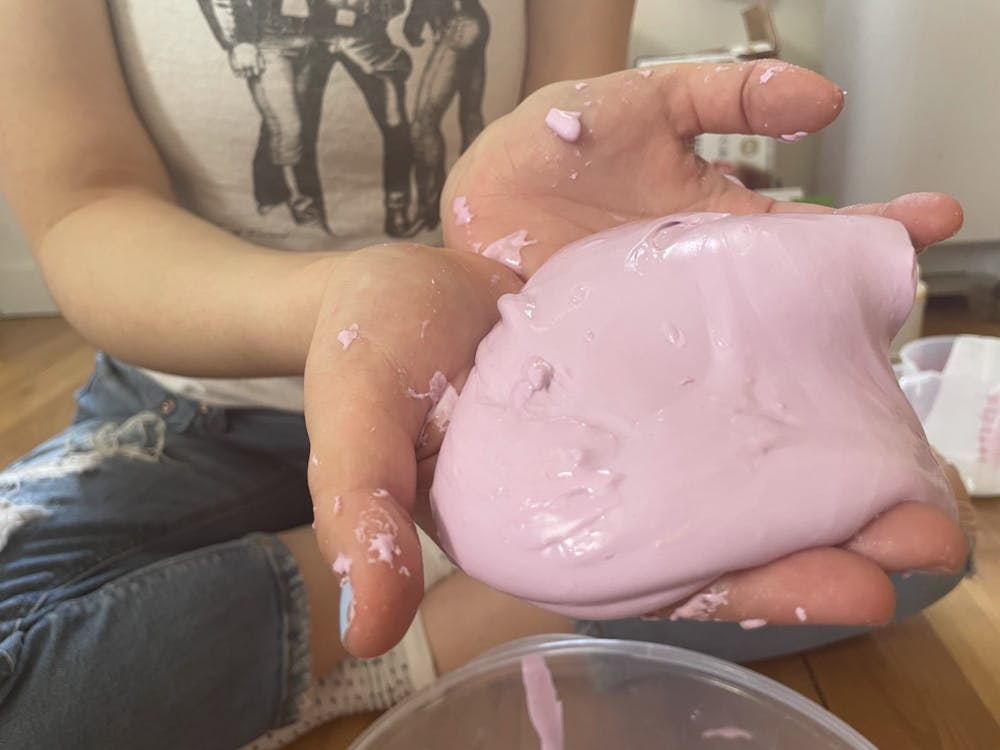Mad about midterms? Feeling lonely after a year of social distancing and isolation? The natural next step is to just throw everything away and become a reclusive mad scientist obsessed with creating life from nuts, bolts and lightning.
But before you can make Frankenstein’s monster, you’ll have to start with the basics. Begin your career in STEM with these three easy science experiments you can do with household items.
Lava lamp
Elevate the good vibes of your dorm or apartment with your own homemade lava lamp. For this project, all you’ll need is a plastic bottle, vegetable oil, Alka-Seltzer tablets, water and food coloring.
Fill up your clean plastic bottle ¾ of the way with vegetable oil, then fill it up to just below the top with water. Add your desired shade of food coloring until the color looks right to you.
Here’s where the magic happens — break up your Alka-Seltzer tablet into small pieces, drop them into your bottle one by one, and wait for the fizzing to stop. Screw on your cap and tip the bottle upside down to watch the vibrant flecks dance around. Water is hydrophilic whereas oil is hydrophobic, meaning they don’t mix. The beautiful, shape-shifting blobs you created are what happens when you combine this reaction with the carbonation of the seltzer!
Eggshell chalk
Spring has almost sprung and Easter is less than a month away, so let’s bust out the eggs and the bright colors.
But for this science project, we won’t be putting colors on eggs — we’ll be using the eggs to put colors elsewhere. To observe the chemical similarities between eggshells and chalk, both of which are heavy in calcium, gather 10 shells, two teaspoons of flour, water and food coloring.
Rinse your shells thoroughly and leave them to dry before getting started. Once they’re ready, grind them into the finest powder you can manage. Add your flour and food coloring, then mix in hot water until you have a stiff paste. Use a mold or paper towel to mush the paste into your desired shape, then let it dry for a few days. Test your creation by making beautiful springtime pictures outside on the sidewalk!
Slime
Remember when social media was obsessed with slime? Why was that? Why were all those quick craft Instagram accounts peddling slime?
Honestly, it might be because it’s fun. And easy.
To create some slime you’ll just need glue, baking soda, food coloring and contact lens cleaner.
First, pour a cup of white glue into a bowl. Add a tablespoon of baking soda and mix thoroughly. You can add more glue to reach your desired consistency.
Next, add drops of food coloring, you can add as many drops as you’d like depending on what shade you’d like your slime to be. Mix the food coloring, baking soda and glue until there aren’t any white spots. Then, add a tablespoon of lens cleaner or contact lens cleaner. Make sure your lens cleaner contains boric acid or sodium borate. Once everything has been added to the bowl, start stirring it with a spoon until the mixture thickens.
Finally, start kneading the slime. If it’s too sticky, add approximately ¼ of a tablespoon of lens cleaner. Continue kneading and adding lens cleaner until the texture is right.
After you’re done playing with the slime, be sure to store it in an airtight plastic bag or container.






